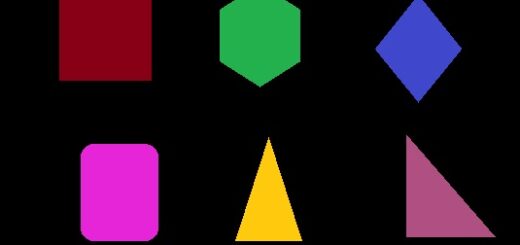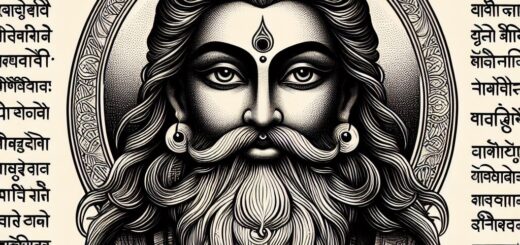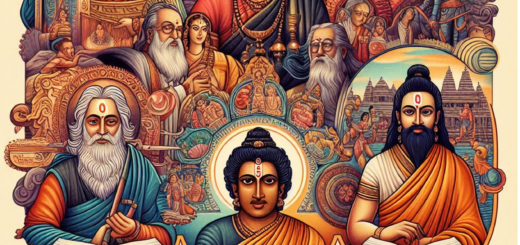FIBRE AND FABRIC

Summary
The thin strands of thread that we see, are made up of still thinner strands called fibres. Fabrics are made up of yarns and yarns are further made up of fibres.
Where do these Fibres come from?

The fibres of some fabrics such as cotton, jute, silk and wool are obtained from plants and animals. These are called natural fibres.
Cotton and jute are examples of fibres obtained from plants.
Wool and Silk fibres are obtained from animals from the fleece of sheep or goats. It is also obtained from the hair of rabbits, yak. The silk fibre is drawn from the cocoon of the silkworm.


Synthetic Fibres

Substances, which are not obtained from plant or animal sources. These are called synthetic fibres.
SOME PLANT FIBRES
COTTON

This cotton wool is also used for filling mattresses, quilts, or pillows. Cotton is grown from in the fields. Cotton plants are usually grown at places having black soil and warm climate. After maturing, the bolls burst open and the seeds covered with cotton fibres can be seen From these bolls, cotton is usually picked by hand. Fibres are then separated from the seeds by combing. This process is called the ginning of cotton.
JUTE

Jute fibre is obtained from the stem of the jute plant. jute is mainly grown in West Bengal, Bihar and Assam. The jute plant is normally harvested when it is at flowering stage. The stems of the harvested plants are immersed in water for a few days. The stems rot and fibres are separated by hand.
SPINNING PINNING COTTON YARN

The process of making yarn from fibres is called spinning. Fibres from a mass of cotton wool are drawn out and twisted. This brings the fibres together to form a yarn. A simple device used for spinning is a hand spindle. Another hand operated device used for spinning is charkha use of charkha was popularized by Mahatma Gandhi as part of the Independence movement.
Weaving

The process of arranging two sets of yarns together to make a fabric is called weaving.
Knitting

Weaving and knitting are used for making different kinds of fabric. These fabrics are used for a variety of clothing items.
HISTORY OF CLOTHING LOTHING MATERIAL
The study of the history of clothing and textiles traces the development, use, and availability of clothing and textiles over human history. The wearing of clothing is exclusively a human characteristic and is a feature of most human societies. Sources available for the study of clothing and textiles include material remains discovered archaeology.
Exercise
1)Classify the following fibres as natural or synthetic: nylon, wool, cotton, silk, polyester, jute
Naturel: Wool, cotton, jute , silk
Synthetic: Nylon, polyester
II. State whether the following statements are true or false
a) Yarn is made from fibres. (True )
b) Spinning is a process of making fibres. ( False )
c) Jute is the outer covering of coconut. ( False )
d) The process of removing seed from cotton is called ginning. (True )
e) Weaving of yarn makes a piece of fabric. (True )
f) Silk fibre is obtained from the stem of a plant. (False )
g) Polyester is a natural fibre. ( False )
3. Fill in the blanks:
a) Plant fibres are obtained from Cotton and Jute.
b) Animals fibres are Silk and Wool .
4. From which parts of the plant cotton and jute are obtained?
Ans: Cotton are obtained from fruit plant of plant and jute is obtained from the stem of the plant.
5. Name two items that are made from coconut fibre.
Ans:Gunny bags and Ropes
6. Explain the process of making yarn from fibre.
Ans: Yarns are made up of thin strands called fibres. The process of making yam from fibres is called spinning. In this process, a mass of cotton wool are drawn out and twisted. This brings the fibres together to form yarn.
Q.1. Name two varieties of cloth materials which are commonly used.
Ans. Cotton, silk/wool.
Q.2. What are fabrics?
Ans. Fabrics mean a woven material, textile or other materials resembling woven cloth.
Q.3. Name some fabrics in your surroundings.
Ans. Bed-sheets, blankets, curtains, table clothes, towels and dusters.
Q. 4. Name the thing which is used to make fabric.
Ans. Yarns.
Q.5. What are yarns made of?
Ans. Yarns are made up of thin strands called fibres.
Q.6. How many types of fibres are there? ,
Ans. There are two types of fibres:
(i) Natural fibres
(ii) Synthetic fibres
Q.7. Name two natural fibres.
Ans.
(i) Cotton
(ii) Jute
Q.8. Name two synthetic fibres.
Ans.
(i) Polyester
(ii) Nylon
Q.9. What material you use for making wicks for oil lamps?
Ans. Cotton wool.
Q.10. Where does cotton wool come from.?
Ans. Cotton wool comes from cotton bolls.
Q.11. What are fruits of cotton plants called?
Ans. Cotton bolls.
Q.12. What type of soil is used to grow cotton plants?
Ans. Black soil.
Q.13. Define ginning of cotton.
Ans. The process of separating fibres from the seeds of cotton is called ginning of cotton.
Q.14. What is jute?
Ans. Jute is a fibre obtained from the stem of a jute plant.
Q.15. Name the states where jute plants are mainly grown in India.
Ans. West Bengal, Bihar and Assam.
Q.16. What is spinning?
Ans. The process of making yarns from fibres is called spinning.
Q.17. Name two hand-operated devices used for spinning.
Ans.
(i) Takli
(ii) Charkha
Q.18. How are fabrics prepared?
Ans. Fabrics are prepared from the yarns by weaving or knitting.
Q. 19. Name the process used to prepare fabrics from yams.
Ans. The processes which used to prepare fabrics are: (i) Weaving and (ii) Knitting.
Q.20. What is weaving?
Ans. The process of arranging two sets of yarns together to make a fabric is called weaving.
Q.21. What is knitting?
Ans. The process in which a single yarn is used to make a piece of fabric is called knitting.
Q.22. Name two methods of knitting.
Ans.
(i) By hands
(ii) By machines
Q.23. Where were the cotton and flax plants cultivated in ancient Egypt?
Ans. Cotton and flax plants were cultivated near the river Nile in ancient Egypt.
Q.24. Name some modem fabrics formed by unstitched piece of fabric. .
Ans. Saree, dhoti, lungi and turban.
Q.25. How are natural fibres better than synthetic fibres?
Ans. The natural fibre absorbs sweat, gives cooling effect and comfort in any season.
Q.26. Are all fibres produced by plants?
Ans. No.
Q.27. Cotton on burning gives paper burning smell and cotton is obtained from plants. Is paper also obtained from plants?
Ans. Yes, paper is also obtained from plants.
Q.2. List the steps involved in the preparation of fabric.
Ans. The following steps are involved in the preparation of fabrics:
(i) Obtaining fibre,
(ii) Preparation of yarn from fibres by spinning,
(iii) When two sets of yarn are involved, yarns are woven on looms to make a fabric. When a single yam is used, the fabric is prepared by knitting.
Q.3. What are natural fibres? Explain with examples.
Ans. The fibres obtained from plants and animals are called natural fibres. For example, cotton from cotton bolls, jute from jute plant, silk from cocoon of silkworm and wool from hair of animals like sheep or goat.
Q.4. What are synthetic fibres?
Ans. The fibres which are made from chemical substances or which are not obtained from the plant and
animal sources are called synthetic fibres. For example, polyester, nylon, and acrylic, etc.
Q.5. Explain how jute is obtained from the jute plant.
Ans. The jute plant is normally harvested at flowering stage. The stems of harvested plants are bundled and immersed in water for 10 to 15 days. The stems rot (the process is called retting) and fibres are separated by hand. These fibres are converted into yarns to make fabrics (Fig. 3.10).

Q. 6. What are looms?
Ans. The devices on which weaving of fabrics takes place are called looms. The looms are either hand operated or power operated.
Q. 7. What happens when a yam from a tom sock is pulled?
Ans. When we pull yarn from a torn sock then a single yarn gets pulled out continuously as the fabric gets unraveled. Socks are made up of knitted fabrics from a single yam.
Q. 8. What were the materials used by people in ancient times in place of clothes?
Ans. It appears that in those days people used the bark and big leaves of trees or animal skin and furs in place of clothes.
Q. 9. What happened when people began to settle in agricultural communities?
Ans. When people began to settle in agricultural communities then they learnt to weave twigs and grass into mats and baskets. Vines, animal fleece or hair were twisted together into long strands. These strands were woven into fabrics.
Q. 10. When we bum wool why do we get the smell of hair bum?
Ans. Wool is obtained from the fleece (hair) of sheep, goat, yak etc. This is the reason why burning of wool resembles the burning of hair.
Q. 11. When we bum nylon, why we do not get the smell of burning paper or burning hair?
Ans. Nylon is a synthetic fibre made from chemicals. On burning nylon these chemicals don’t produce the smell of burning paper or hair which are natural substances.
Q.1. Describe the process of the formation of yam from cotton wool.
Ans. The cotton wool is obtained from cotton plants. The cotton plants are grown in fields. They are usually grown at the places having black soil and warm climate. The fmits of the cotton plants called cotton bolls are about the size of lemons. After maturing, the bolls burst open and seeds covered with cotton fibres can b,e seen. From the cotton bolls cotton is picked by hands. Fibres are then separated from the seeds by combing. This process is called ginning of cotton. It is done by hand or by machines. These fibres are then converted into yam.

Q.2. Describe the process of spinning and weaving.
Ans. Spinning: The process of making yarn from fibres is called spinning. In this process fibres from a mass of cotton wool are drawn out and twisted. By this fibres come together to form a yarn. Spinning can be done by hand, by takli and charkha. On a large scale, spinning is done with the help of machines.
Weaving: The process of arranging two sets of yarns together t6 make a fabric is called weaving. The process of weaving can be done on looms. The looms are either-hand operated or power operated.




























